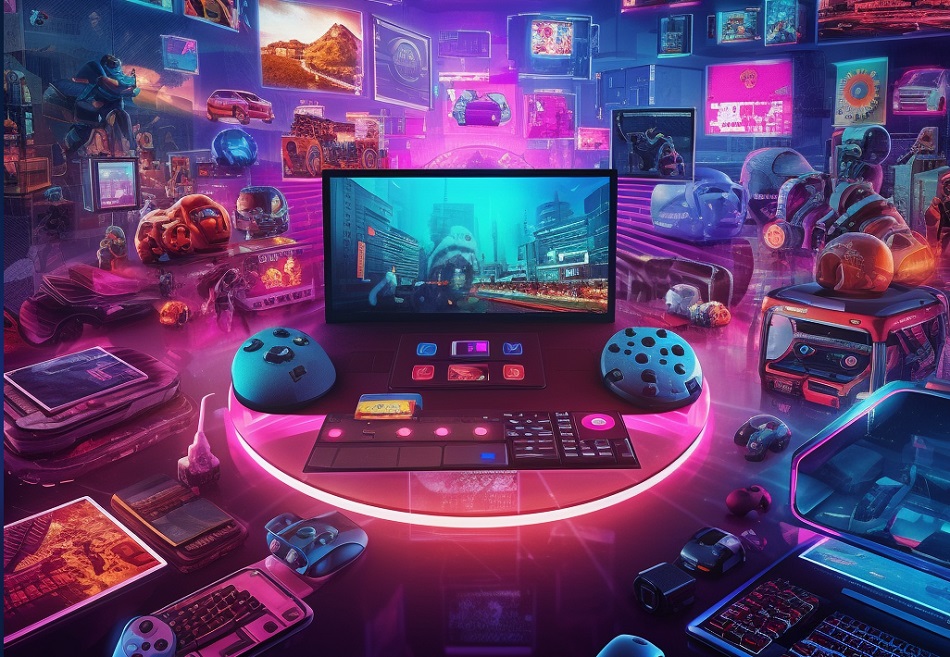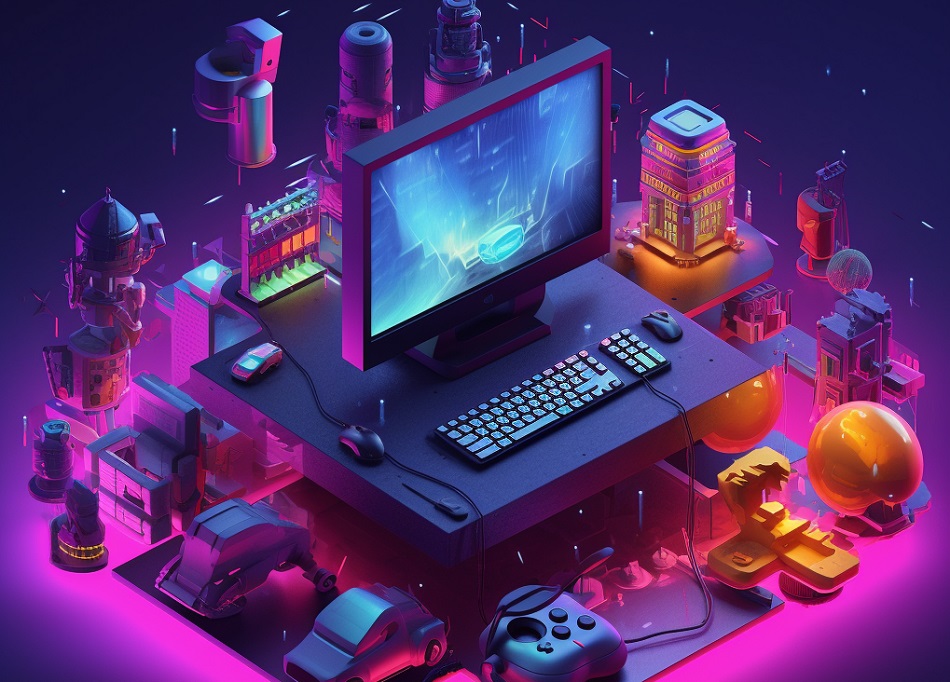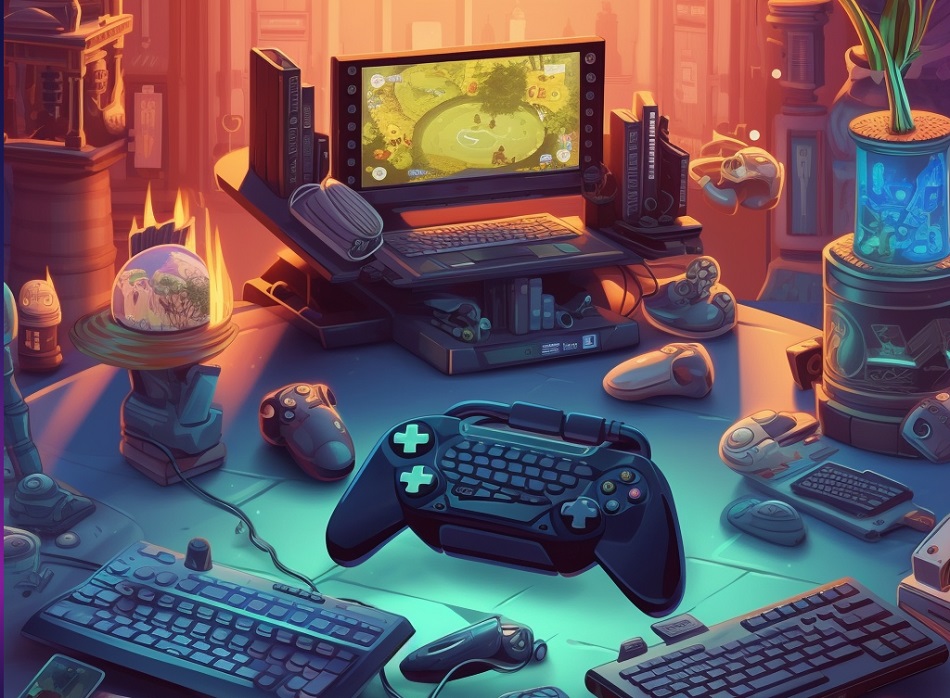The gaming industry has always been at the forefront of technological innovation, pushing the boundaries of what’s possible in terms of graphics, gameplay mechanics, and user experiences. In recent years, two emerging technologies have started to make their presence felt in the gaming world: Non-Fungible Tokens (NFTs) and Cryptocurrencies. This in-depth article explores the role and future of these technologies in the gaming industry.

Cryptocurrencies and NFTs: An Introduction
To understand their potential impact on gaming, it’s important to first understand what NFTs and cryptocurrencies are and how they work:
Cryptocurrencies
Cryptocurrencies are digital or virtual currencies that use cryptography for security. Unlike traditional currencies issued by central banks, cryptocurrencies are decentralized and typically operate on technology called blockchain, which is a distributed ledger enforced by a disparate network of computers.
Non-Fungible Tokens (NFTs)
Non-Fungible Tokens (NFTs) are a type of digital asset created using blockchain technology. While all units of a cryptocurrency like Bitcoin are interchangeable with each other, making them fungible, NFTs are unique – each one has distinct information or attributes that set it apart from the rest. This uniqueness and scarcity is part of what gives NFTs value.
Cryptocurrencies in Gaming: Current Use Cases
Cryptocurrencies have been finding their way into gaming in various forms. Let’s look at some of the ways they are currently being used.
In-Game Purchases
Cryptocurrencies are being used as a form of in-game currency for purchases within games. Because cryptocurrencies are decentralized and not tied to any specific country, they can be used by anyone, anywhere in the world, making them an ideal fit for the global nature of online gaming.
Decentralized Gaming Platforms
Cryptocurrencies form the backbone of decentralized gaming platforms. These platforms leverage blockchain technology to give players true ownership over their in-game assets, allow for peer-to-peer transactions, and create transparent and immutable records of all transactions.
Tokenization of Assets
One of the most promising use cases for cryptocurrencies in gaming is the tokenization of in-game assets. Tokenization involves creating a digital representation of a physical asset on the blockchain. In the context of gaming, this means creating digital tokens for in-game assets like weapons, armor, and characters.
NFTs in Gaming: Current Use Cases

NFTs, being unique and provably scarce, are perfect for representing one-of-a-kind in-game assets. The integration of NFTs in games is still in its early stages, but there are already some compelling use cases.
Ownership and Trade of In-Game Assets
Traditionally, in-game assets are owned by the game developers. Players can purchase and use these assets, but they don’t really own them and cannot trade or sell them outside the game. NFTs are changing this by providing players with true ownership over their in-game assets.
Because each NFT is unique, they can represent individual in-game assets, and because they’re built on blockchain technology, ownership of these assets can be provably verified. Players can buy, sell, and trade these NFT-based in-game assets, both within and outside the game, opening up new possibilities for player-driven economies.
Cross-Game Compatibility
Another exciting use case for NFTs in gaming is cross-game compatibility. Since NFTs exist on a blockchain separate from the game itself, they can potentially be used across multiple different games. A weapon, character, or item represented as an NFT in one game could potentially be used in another game, as long as both games support the same NFT standards.
The Future of Cryptocurrencies and NFTs in Gaming

While the use of cryptocurrencies and NFTs in gaming is still in its early stages, the potential for these technologies in the gaming industry is huge. Here’s what the future might hold.
Greater Player Empowerment
The use of blockchain technologies like cryptocurrencies and NFTs can lead to greater player empowerment. By giving players true ownership over their in-game assets and enabling player-driven economies, these technologies can make games more engaging and rewarding.
New Monetization Models
Cryptocurrencies and NFTs could also lead to new monetization models for game developers. Rather than relying solely on the sale of games or in-game purchases, developers could earn revenue by facilitating the trade of in-game assets or by selling unique, high-value NFT-based assets.
Integration with Decentralized Finance (DeFi)
The integration of gaming with decentralized finance (DeFi) could be another game-changer. Players could potentially earn real-world value through their in-game activities, which could then be traded on the open market or used within the growing DeFi ecosystem.
Regulatory Challenges and Considerations
As with any disruptive technology, the use of cryptocurrencies and NFTs in gaming will likely face regulatory challenges. Issues around consumer protection, money laundering, and taxation will need to be addressed.
Expanded Social and Economic Dynamics
As NFTs and cryptocurrencies become more deeply embedded in the gaming ecosystem, we can expect to see the social and economic dynamics of gaming communities significantly evolve. These technologies will make it possible for players to engage in commerce with one another on an unprecedented scale, driving the development of complex in-game economies that mirror those found in the real world.
Play-to-Earn Models
One of the most exciting trends emerging from the intersection of blockchain and gaming is the play-to-earn model. This model, which was pioneered by games like Axie Infinity, allows players to earn real-world value for their in-game efforts, be it in the form of cryptocurrencies or NFT-based assets. As this model gains traction, we could see a paradigm shift where playing games becomes not just a leisure activity, but a viable means of income for some players.
Revolutionizing Game Development and Financing
Cryptocurrencies and NFTs could also revolutionize game development and financing. Currently, funding game development projects can be a significant challenge, particularly for smaller independent developers. However, through Initial Coin Offerings (ICOs) or Initial DEX Offerings (IDOs), developers could raise funds for their projects by selling game-specific tokens. These tokens could then serve multiple purposes within the game’s ecosystem, from acting as in-game currency to granting holders voting rights on game development decisions.
The Need for Scalable and Eco-friendly Solutions
As the gaming industry embraces NFTs and cryptocurrencies, it will also need to grapple with issues related to scalability and environmental impact. Currently, the most popular blockchain networks face limitations in terms of transaction speed and capacity, which could pose challenges as more and more games begin to incorporate these technologies.
Furthermore, the environmental impact of blockchain technologies, particularly those that use energy-intensive proof-of-work consensus mechanisms, has been a subject of much debate. As the gaming industry becomes more intertwined with these technologies, finding more eco-friendly blockchain solutions will become increasingly important.
Interoperability and Standardization
Another important area of focus for the future will be interoperability and standardization. For the full potential of NFTs and cryptocurrencies in gaming to be realized, different games and platforms will need to be able to interact seamlessly with one another. This will require widespread adoption of common standards and protocols, which will allow for NFTs and other blockchain-based assets to be used across multiple different games and platforms.
The Advent of Virtual Economies
As NFTs and cryptocurrencies continue to permeate the gaming world, we can expect the rise of robust virtual economies. Players will not just participate in games, but also in an economic system where their in-game assets have real-world value. Virtual real estate, unique items, or even characters can be sold or leased, creating a marketplace that blurs the line between virtual and real.
Augmented and Virtual Reality Meets Blockchain
The emergence of augmented and virtual reality technologies (AR/VR) offers further exciting possibilities when combined with blockchain. By merging the immersive experience of AR/VR with the ownership capabilities of NFTs, games can provide a level of interactivity and realism that vastly enhances player engagement. Imagine not only owning a unique item within a virtual world but also interacting with it in a realistic manner.
Impact on Gaming Narratives and Storytelling
The integration of NFTs and cryptocurrencies also has the potential to influence gaming narratives and storytelling. For example, unique NFTs could be used to unlock exclusive story content or determine the trajectory of a game’s narrative. This could lead to a new level of player immersion and engagement, as players become part of the game’s story and influence its direction.
The Rise of Blockchain Gaming Studios
Given the massive potential of blockchain in gaming, we may also see the rise of dedicated blockchain gaming studios. These studios will specialize in creating games that fully leverage the capabilities of blockchain, NFTs, and cryptocurrencies, leading the way in this new era of gaming.
Security Considerations
With the increased value associated with gaming assets, security becomes a more significant concern. Blockchain technologies are known for their security advantages, but as more value is transferred and stored within games, the risk of hacks and thefts becomes a critical issue to address. This may drive advancements in blockchain security and increase the demand for secure gaming platforms.
The Need for Balanced Game Mechanics
As the monetary stakes in games increase, balancing game mechanics will become even more critical. Developers will need to ensure that their games remain fun and fair, and don’t devolve into ‘pay-to-win’ systems, which could alienate players who are unwilling or unable to invest large amounts of money in the game.
Final Thoughts
The integration of NFTs and cryptocurrencies into the gaming industry holds immense potential to reshape the way games are played, developed, and monetized. As with any disruptive technology, there will be challenges to overcome, including regulatory hurdles, technical limitations, and environmental concerns.
Yet, the rewards could be significant. The adoption of these technologies could lead to a gaming industry that is more player-centric, where players are rewarded for their contributions, where in-game economies flourish, and where games become increasingly immersive and interactive.
Indeed, as we stand on the brink of this new era in gaming, one thing is clear: the future of gaming is not just about better graphics or more immersive experiences. It’s also about redefining the very notion of what a game can be, fueled by the incredible potential of NFTs and cryptocurrencies.
